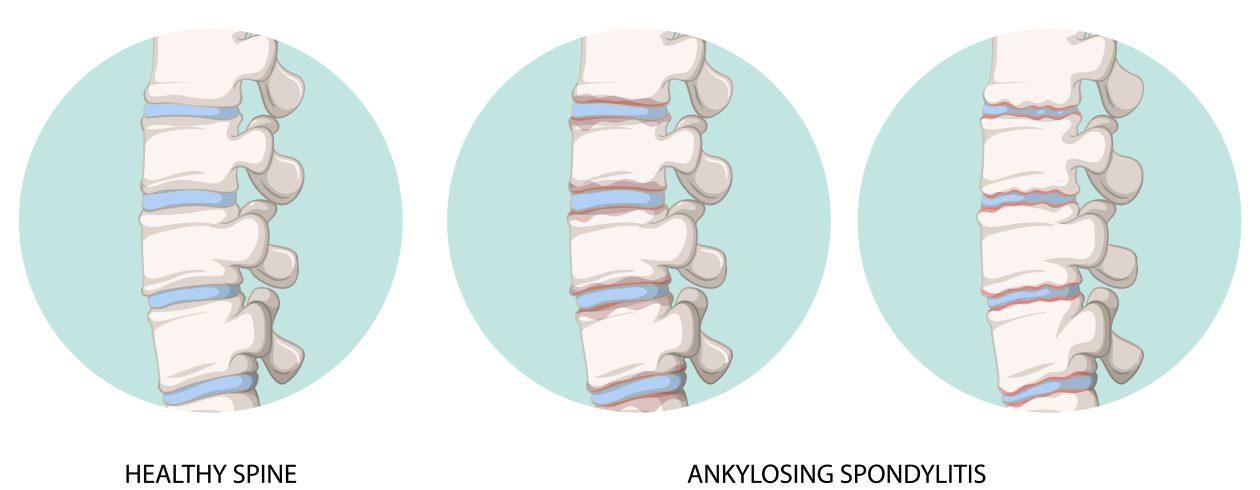Introduction
Ankylosing Spondylitis (AS) stands as a formidable challenge for those afflicted, characterized by chronic inflammation that primarily targets the spine. This illness may significantly impact The quality of life, including stiffness, pain, and decreased movement. Since many traditional treatments cannot offer complete relief, many turn to alternative methods. The Paleo Diet seems to be the most promising of all these options. The Paleo Diet is based on the ideas of ancestral nutrition and promotes complete, unprocessed foods consistent with our evolutionary history. According to its supporters, the Paleo Diet may be very beneficial for controlling AS symptoms since it emphasizes nutrient-dense foods rather than processed meals from today’s market.
The Paleo Diet suggests a departure from the typical Western diet, which is heavy in refined sugars, processed foods, and artificial chemicals. Instead, it promotes returning to eating simpler, more natural foods like fish, lean meats, fruits, vegetables, nuts, and seeds.
The Paleo Diet attempts to lower overall inflammation in the body, which may lessen symptoms related to AS, by avoiding grains, dairy, and legumes, which might cause inflammation in certain people. However, there is currently no scientific study on the direct benefits of the Paleo diet for AS; preliminary studies and anecdotal data point to the possibility that some AS sufferers may see improvements in symptoms like pain, stiffness, and exhaustion if they follow this eating plan. Before making significant dietary changes, people should, as with any dietary intervention, speak with medical professionals and consider their particular needs and situation.
Understanding Ankylosing Spondylitis
Ankylosing Spondylitis (AS) is a chronic inflammatory disease that primarily affects the spine and sacroiliac joints, leading to pain, stiffness, and decreased mobility. It may also impact other organs, including the heart, eyes, and musculoskeletal system. AS usually affects young individuals, and symptoms get worse over time. Common symptoms that can seriously affect everyday activities and quality of life include diminished flexibility, morning stiffness, and persistent lower back pain.
Nonsteroidal anti-inflammatory drugs (NSAIDs), corticosteroids, and biological pharmaceuticals are commonly used in conventional treatments for AS to control symptoms and reduce the disease’s progression. Although these methods can comfort certain people, they have drawbacks and adverse effects. Furthermore, they won’t fully address the underlying inflammation. This highlights the significance of investigating alternative therapies, like the Paleo Diet, which provides a comprehensive strategy for controlling inflammation and enhancing general health.
Diet is vital in controlling inflammation, so people with AS should consider this. Based on evolutionary principles, the Paleo Diet strongly emphasizes complete, unprocessed foods that are high in nutrients and free of foods like dairy and grains that may cause inflammation. This dietary strategy promotes optimal health and lessens inflammation by emphasizing lean proteins, fruits, vegetables, and healthy fats. Anecdotal evidence and preliminary studies point to hopeful results, even if formal research explicitly testing the Paleo Diet for AS is ongoing. People with AS can better control their symptoms and enhance their general health by consuming nutrient-dense diets and avoiding pro-inflammatory chemicals.
Unveiling the Paleo Diet Approach
The Paleo Diet, also known as the “caveman” or “Stone Age” diet, draws inspiration from the dietary patterns of our prehistoric ancestors. Supporters of this strategy contend that our genetic composition is more in line with what early humans ate before the invention of agriculture and processed meals. While excluding grains, dairy, legumes, and refined sugars, the diet emphasizes whole, unprocessed foods such as lean meats, fish, fruits, vegetables, nuts, and seeds. Proponents of the Paleo Diet contend that emphasizing foods that our ancestors would have eaten during the Paleolithic era can reduce inflammation and promote optimal health, making it a tempting alternative for people with illnesses such as Ankylosing Spondylitis (AS).
A modified version of the classic Paleo diet designed to treat autoimmune disorders like AS is called the Paleo Autoimmune Protocol, or AIP. The AIP expanded the Paleo Diet’s core tenets, including other limitations to reduce inflammation and boost immunity. AIP removes several foods that potentially aggravate autoimmune reactions, including nightshade vegetables, eggs, nuts, and seeds. It also does away with dairy, wheat, and processed foods. The anti-inflammatory autoimmune protocol (AIP) provides people with AS with a structured framework for controlling their symptoms through dietary intervention by taking a more restrictive approach to identify and eliminate potential triggers that may lead to autoimmune flare-ups.
The Paleo Diet’s central tenet is to consume whole, nutrient-dense foods instead of processed and inflammatory ones. High-quality proteins, good fats, and a range of fruits and vegetables are prioritized in the diet to supply vital nutrients that promote general health and well-being. Eliminating refined sugars and processed meals can lower inflammation and regulate blood sugar, especially for AS patients. The Paleo Diet promotes anti-inflammatory foods high in antioxidants and phytonutrients to further assist the body’s natural healing processes. In general, the Paleo Diet provides a comprehensive nutritional strategy that meets the dietary requirements of people with AS, which may assist in reducing symptoms and enhancing quality of life.
Investigating the Science Behind the Paleo Diet for AS
Scientific research has increasingly recognized the potential benefits of the Paleo Diet in managing conditions characterized by inflammation, including Ankylosing Spondylitis (AS). Several investigations have exhibited the anti-inflammatory characteristics of the Paleo Diet, which is ascribed to its focus on complete, unprocessed foods that are abundant in nutrients and antioxidants. These studies demonstrate that those following the Paleo Diet had lower inflammatory markers such as C-reactive protein (CRP) and interleukin-6 (IL-6). This indicates that the diet may effectively reduce inflammation linked to AS.
Various processes, such as immune system modulation and gut health changes, could explain the Paleo Diet’s impact on AS symptoms. The diet may encourage better gut flora by removing processed foods and possible allergens, which may lower intestinal permeability and stop the translocation of bacterial endotoxins linked to inflammation. Furthermore, the Paleo Diet’s high food content supplies vital vitamins and minerals that aid tissue regeneration and immune system function, slowing AS’s progression and easing related symptoms.
Despite its possible advantages, the Paleo Diet may come under fire and misinformation about its viability, durability, and nutritional sufficiency. Certain food groups, including grains and dairy, are restricted in the diet, which some critics claim could result in nutrient shortages or insufficient fiber intake. Supporters respond that a well-thought-out Paleo diet can support metabolic health and satiety while supplying all necessary nutrients. Additionally, by emphasizing plant-based items in the diet and using sustainable sourcing methods, worries about the environmental effects of increased meat consumption are being addressed. If they are aware of and confront these misunderstandings, people can make well-informed judgments regarding implementing the Paleo Diet to control AS symptoms.
Practical Tips and Considerations
Crafting a personalized Paleo Diet meal plan can be instrumental in managing Ankylosing Spondylitis (AS) symptoms effectively. The foundation of the Paleo method is including foods high in nutrients, such as fruits, vegetables, nuts, and seeds, along with avoiding processed meals and possible allergies. Including anti-inflammatory foods high in omega-3 fatty acids, such as salmon, walnuts, and flaxseeds, can be very helpful for those with AS. Experimenting with tasty Paleo meals that use these components can also improve diet adherence and increase the fun factor of mealtimes.
Although the Paleo Diet paradigm offers a helpful starting point for treating AS, it’s critical to understand that each person has different dietary requirements and tolerances. Taking a customized strategy and being willing to try new things is imperative. Certain foods may cause inflammation or worsen symptoms for some AS sufferers, requiring adjustments to their Paleo diet regimen. Measuring symptom reactions and keeping a food journal help pinpoint possible triggers and adjust the diet appropriately. For more advice on individualized dietary plans, speak with a medical professional or registered dietitian specializing in autoimmune diseases.
For thorough management of AS, incorporating holistic lifestyle elements into the Paleo lifestyle is crucial, in addition to nutritional adjustments. Stress-reduction methods like yoga, meditation, and mindfulness can help lessen inflammation and ease symptoms. Getting enough sleep is also essential since insufficient sleep can make the pain and inflammation related to AS worse. Consistent exercise catering to each person’s talents and preferences can improve general well-being, strength, and joint mobility. Within the parameters of the Paleo lifestyle, individuals with AS can maximize their health and quality of life by adopting a holistic approach that tackles nutrition, stress, sleep, and physical exercise.
Exploring the Intersection of Diet, Gut Health, and Autoimmunity
In the realm of autoimmune conditions such as Ankylosing Spondylitis (AS), emerging research sheds light on the pivotal role of gut health in modulating immune function. Trillions of bacteria in the digestive tract make up the gut microbiome, essential for controlling immunological reactions and preserving general health. Dysbiosis, a word used to describe disruptions in the composition of the gut microbiota, has been linked to the pathogenesis of autoimmune disorders, including AS. Therefore, by reestablishing microbial balance and reducing inflammation, approaches like the Paleo Diet that aim to promote healthy gut microbiota can potentially control autoimmune disorders.
Nutritional variables significantly impact inflammation and immunological function, which has consequences for the onset and course of autoimmune illnesses like AS. The Paleo Diet is closely aligned with principles that support gut health and reduce inflammation because it strongly emphasizes whole, unprocessed foods rich in nutrients and free of grains, dairy, and refined sugars. The Paleo Diet may help reduce autoimmune reactions and symptoms of AS by emphasizing nutrient-dense meals and avoiding possible inflammatory triggers. Furthermore, adding foods high in anti-inflammatory properties, including berries, leafy greens, and fatty fish, can enhance the diet’s effectiveness in reducing inflammation and improving general health.
Investigating other dietary approaches can improve the management of autoimmune disorders such as AS, even though the Paleo Diet provides a valuable framework for promoting immune system and gut health. Probiotic-rich fermented foods like kefir, kimchi, sauerkraut, and yogurt can help maintain the integrity of the intestinal barrier and encourage microbial diversity.
Similarly, eating foods high in prebiotics, such as onions, garlic, bananas, and asparagus, gives you vital nutrients that support healthy gut flora. Moreover, adopting an anti-inflammatory diet rich in fruits, vegetables, healthy fats, and lean proteins can enhance the Paleo method. This will have a synergistic effect on immune regulation and general wellness. By integrating varied dietary methods customized to their unique requirements and inclinations, people with AS can improve resilience against autoimmune pathology and maximize gut health.
Conclusion
In conclusion, the Paleo Diet is a promising dietary approach for individuals grappling with Ankylosing Spondylitis (AS). Putting an emphasis on complete, nutrient-dense foods and avoiding potential inflammatory triggers, the Paleo Diet provides a natural and comprehensive approach to controlling AS symptoms. Its focus on optimizing gut health and anti-inflammatory foods aligns with recent research that shows the relationship between inflammation, nutrition, and autoimmune disorders. The Paleo lifestyle, defined by intentional dietary choices and lifestyle adjustments, encourages people to control their AS and actively enhance their general well-being.
When people start their journey toward managing AS, it’s critical to undertake dietary changes cautiously and seek advice from medical professionals. Although the Paleo Diet has potential, each person’s results may differ; thus, a customized approach is required. It is advised that readers get advice from licensed healthcare professionals, such as registered dietitians or nutritionists, to ensure that dietary suggestions are safe and customized to each person’s needs and health situation. In addition, encouraging self-experimentation allows people to investigate dietary changes and determine how they affect AS symptoms, promoting an active and knowledgeable attitude to health care.
They are treating AS, which involves dietary decisions and comprehensive lifestyle adjustments to improve general health. Adopting stress-reduction strategies, prioritizing enough sleep, and engaging in regular exercise work with nutritional therapies to help control AS. By taking a proactive and comprehensive approach to health, people with AS can maximize symptom control, enhance quality of life, and develop resilience in the face of autoimmune difficulties. Giving people the tools to take charge of their health journeys promotes agency and autonomy, which lays the groundwork for long-term vitality and well-being.
References
NIAMS. (2017, April 5). Ankylosing Spondylitis. Retrieved April 19, 2023, from National Institute of Arthritis and Musculoskeletal and Skin Diseases website: https://www.niams.nih.gov/health-topics/ankylosing-spondylitis
Paleo diet: Eat like a hunter-gatherer and lose weight. (2022). Retrieved April 19, 2023, from Mayo Clinic website: https://www.mayoclinic.org/healthy-lifestyle/nutrition-and-healthy-eating/in-depth/paleo-diet/art-20111182
Upham, B. (2021, September). Anti-Inflammatory Foods for Ankylosing Spondylitis. Retrieved April 19, 2023, from EverydayHealth.com website: https://www.everydayhealth.com/hs/ankylosing-spondylitis/foods-that-fight-inflammation/
Cherney, K. (2019, February 8). 5 Self-Care Tips for Ankylosing Spondylitis. Retrieved April 19, 2023, from Healthline website: https://www.healthline.com/health/ankylosing-spondylitis/self-care-tips-for-as
Bernstein, S. (2014, December 8). What Is Ankylosing Spondylitis? Retrieved April 19, 2023, from WebMD website: https://www.webmd.com/ankylosing-spondylitis/what-is-ankylosing-spondylitis
Pietrangelo, A. (2013, May 3). Most Beneficial Ankylosing Spondylitis Diet. Retrieved April 19, 2023, from Healthline website: https://www.healthline.com/health/ankylosing-spondylitis-diet
Was this helpful?

Joseph Emb, RDN
Founder of StyleVitally.com | Registered Dietitian & Wellness Advocate
What I Cover:
I’m passionate about connecting nutrition science and everyday wellness to help people live healthier, more vibrant lives. I write about evidence-based nutrition, mindful eating, sustainable lifestyles, and holistic well-being at StyleVitally.com.
My Background:
The University of Texas in Austin, where I earned my Dietetics diploma, laid the groundwork for my nutrition and health career. My training and hands-on experience taught me the science and art of using nutrition to enhance health and well-being.
Professional Journey:
I’m an RDN with lots of experience. I’ve helped people seeking tailored nutritional recommendations in clinical settings and community outreach programs. My constant learning and professional development ensure that my recommendations are always based on the latest evidence.
Ethical Commitment:
My practice prioritizes integrity. My content is transparent and objective, following the most significant ethical standards. I can give my audience unbiased advice because I’m not affiliated with food businesses or industry associations. I want to help people make informed health decisions that match their values and ambitions.
Join Me on the Wellness Journey:
Join me on the path to vitality and well-being, whether facing nutritional issues, seeking sustainable lifestyle changes, or simply wanting a better, happier you. We’ll discover how diet, mindfulness, and holistic well-being can maximize your potential.







Leave a Reply
View Comments